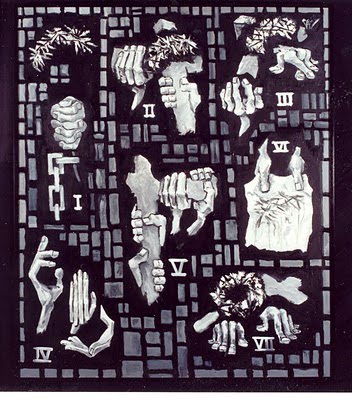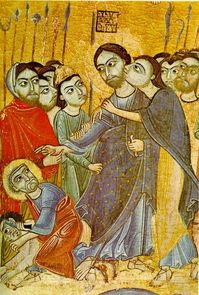Earlier, I offered the press release announcing Bishop Nicholas DiMarzio’s homily, which was delivered at this evening’s Chrism Mass.
Here’s more, from his prepared text:
In recent weeks, we have all been reminded of the evil that some of our brothers inflicted
upon children. These men are our brothers and we all, priests and bishops, share some of the responsibility for the harm they have done, for we could not believe it was possible. For this reason, we must resolve to be vigilant in the protection of those young people in our care. We must humbly seek forgiveness of those that have been robbed of innocence and the faithful whose trust was abused.I do want to take a moment to speak about The New York Times mischaracterization of the role of the Holy Father when he was Archbishop of Munich and then Cardinal Prefect of the Congregation for the Doctrine of the Faith. The fact is that the paper omitted significant facts with respect to the case of a certain priest in Wisconsin. The reality is that the Congregation for the Doctrine of the Faith did not have competency over Canonical Trials in 1996 when the case is believed to have first been referred to Cardinal Ratzinger. Moreover, the priest in question, a
Father Murphy, was in the midst of a Canonical Trial. He died before a verdict was rendered. The case of the priest in the Munich Archdiocese also is presented as a definite error of judgment when all the facts are not known.This evening, I am asking you to join me in making your displeasure known to the
editors. I might even suggest cancelling our subscriptions to the New York Times, but we need to know what the enemy is saying. Enough is enough! Two weeks of articles about a story from many decades ago, in the midst of the Most Holy Season of the Church year is both callous and smack of calumny. I ask you to stand up with me and send a message loud and clear that the Pope, our Church, and our bishops and priests will no longer be the personal punching bag of the New York Times.The Church and broader society everywhere looked upon sexual abuse as a moral failing. Such behavior was thought shameful and sinful. Tragically, we and other social institutions failed to recognize that it was a crime. As a result, the offender was not sent to prison but for treatment and rehabilitation. The Church sought not to buy the silence of victims but to offer any assistance that would help in bringing about healing. In most cases, the Church sought to not publicize the matter because of the scandal that it would cause and the family of the child did not want the matter to be public.
In the intervening years, we have all learned a great deal and as a consequence how we
handle these cases is radically different. Today, no one anywhere in society is doing more than the Catholic Church to protect children and bring about justice for those who were robbed of their innocence. We recognized first and foremost that we are dealing with criminal behavior. As such, it is immediately reported to the authorities because it is their competence to investigate crimes and not the Church’s. Our emphasis has moved from avoiding scandal to protecting children and so such behavior is immediately publicized, reported to the District Attorney and not kept secret. We immediately seek to offer whatever assistance psychological, medical, financial, a victim requires and we begin by offering our sincere and deepest apologies. The priest still receives treatment and we are concerned for his welfare because he remains our brother.
You can read the complete text of the homily for more.

